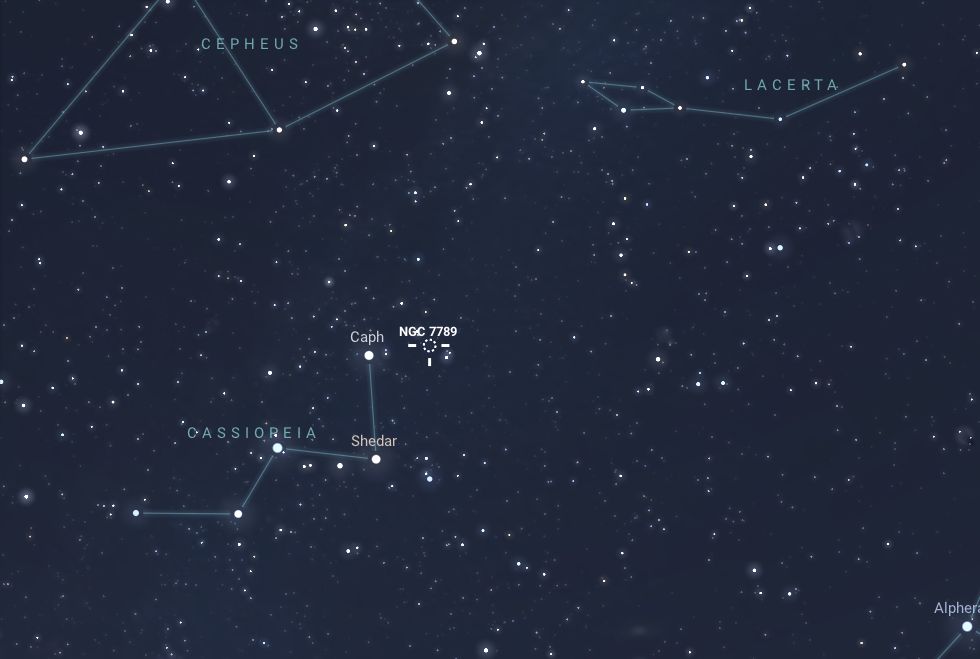NGC 7789, also known as the White Rose Cluster or Caroline’s Rose, is a prominent open star cluster situated in the northern constellation Cassiopeia, about 8,000 to 9,000 light-years from Earth within the Perseus spiral arm of the Milky Way. Its arrangement of stars resembles the petals of a rose when viewed through a telescope, lending it the nickname “White Rose.” It was discovered by German-British astronomer Caroline Herschel in 1783 and was later catalogued in the New General Catalogue (NGC) by John Louis Emil Dreyer in 1888.
Physical Characteristics
NGC 7789 is a rich, densely populated open star cluster containing several hundred stars that originated from the same molecular cloud. With an estimated age of around 1.6 billion years, it is one of the oldest open clusters known, as most open clusters dissipate long before reaching this age.
The cluster’s stellar population includes a significant number of red giant stars, which give the cluster its characteristic warm, reddish glow. These red giants are stars that have exhausted the hydrogen in their cores and are now in a later stage of stellar evolution, with cooler outer layers that emit a reddish colour. The presence of these older red giants is a strong indicator of the cluster’s age, as younger clusters generally contain more blue main-sequence stars, which burn hotter and faster than red giants.
Although NGC 7789 primarily contains older stars, it still hosts some fainter, bluish stars that are less massive and thus burn at lower temperatures, prolonging their main-sequence lifespans. However, these blue stars are generally outshone by the cluster’s dominant red giants, which make up most of the visible stars in the cluster.
The cluster spans about 15 arc minutes in the sky, or roughly half the apparent diameter of the full Moon, with an irregular and somewhat asymmetrical shape. Its dense grouping of stars creates complex patterns that resemble the petals of a rose, adding to its aesthetic appeal.
Observation
With an apparent magnitude of approximately 6.7, NGC 7789 is just beyond the visibility of the naked eye. Under dark-sky conditions, it can be observed through binoculars or small telescopes, which reveal its distinctive arrangement of stars. In telescopic views, the cluster’s mixture of red and faint blue stars becomes apparent, creating a pleasing colour contrast for viewers.
NGC 7789 is best observed from the Northern Hemisphere, particularly between late summer and winter (August to December) when the constellation Cassiopeia is high in the evening sky. The autumn months provide ideal conditions, as Cassiopeia’s distinctive “W” shape is prominently positioned, making it easier to locate NGC 7789.
Cassiopeia is a circumpolar constellation for much of the Northern Hemisphere, meaning the cluster technically remains above the horizon all year-round. However, it sits low on the horizon in spring and early summer, making it more challenging to view due to atmospheric interference.




